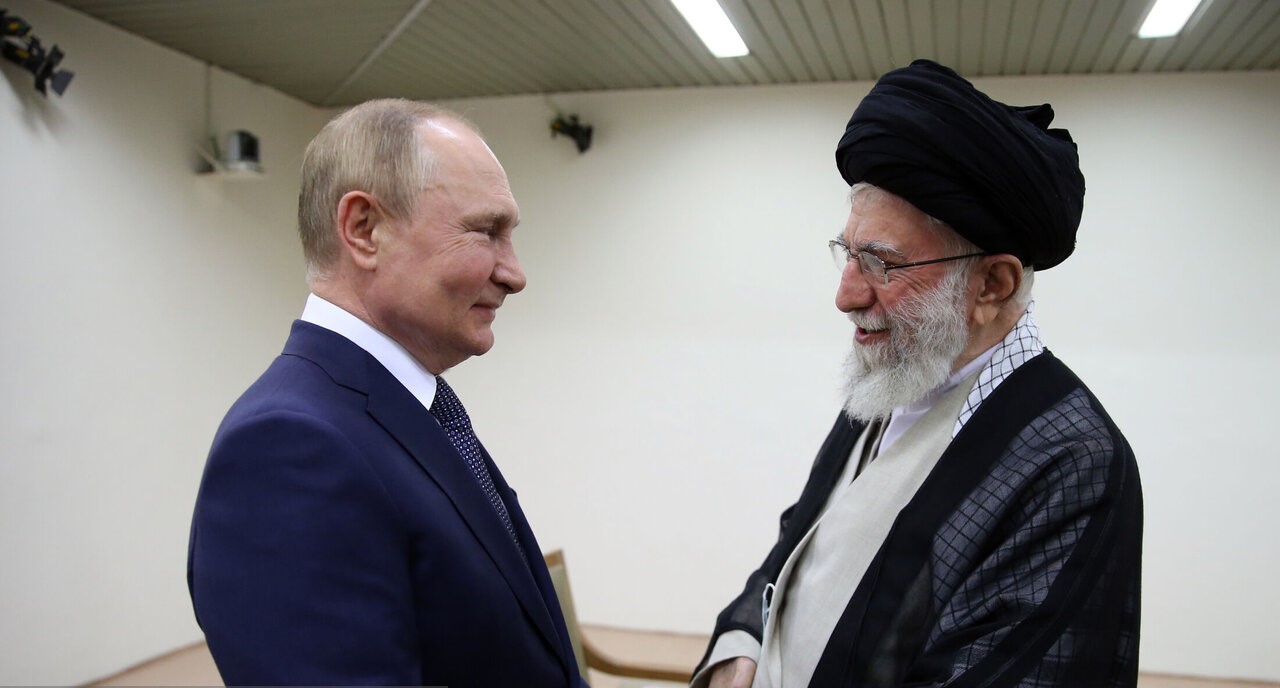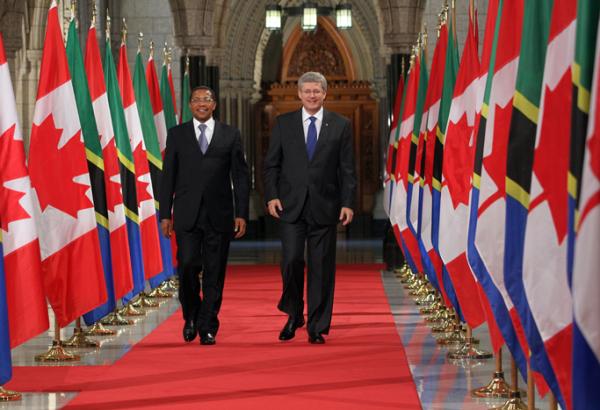Amidst the tumult of conflict in Ukraine and instability in the Middle East, the partnership between Russia and Iran is at a historic juncture and is ripe for potential multifaceted cooperation. With Western sanctions, defence production and supply vulnerabilities persist for both these states, which seek to advance their respective interests and authoritarian model of governance, and forge a partnership that transcends diplomatic rhetoric. Collaborative efforts include transferring crucial military technology, equipment, ammunition, and technical assistance. In this symbiotic relationship, both are navigating the complexities of international and regional instability and fostering a strategic and united axis to challenge the Western-led international order. This article focuses on the security implications of this relationship and why this partnership is alarming for supporters of Ukraine’s right to self-determination and Middle Eastern stability.
Russia and Iran have historic ties, being historic enemies for centuries. Since the Islamic Revolution in 1979, the relationship has been hindered by the complexity of the Middle East and Caucasus security and rivalry in the energy market. Moreover, in the last decade, the relationship has also been hindered by the international community’s persistent efforts to isolate Iran due to its nuclear ambitions and use of proxies in the Middle East. However, amidst the backdrop of Russia’s war on Ukraine and Iran’s adversarial position towards the West, both find their relationship strategically imperative. This symbiosis includes circumventing the impact of sanctions and international isolation, and the need to forge an axis of authoritarian alliances to maintain international clout and destabilize Western interests. Moreover, both need military equipment and technical assistance for their defence industries and militaries to achieve their respective aims in Ukraine and the wider Middle East.
Russia has utilized mass artillery in Ukraine. However, its production has struggled to meet demand. Iran has helped to mitigate Russia’s “shell hunger” by supplying over 300,000 shells in the last year. A report by the Center for Strategic and International Studies (CSIS), Collaboration for a Price, suggests that over 4,600 Iranian Shahed-136 drones have been used to attack Ukrainian populated areas and civilian infrastructure, including power supplies. In another report by CSIS, ‘Back in Stock’, it is indicated that Iran has helped Russia develop a Shaheh-136 drone factory, with the target of producing 6,000 by 2025 and further assembling 10,000 a year. However, this target will likely be constrained due to Western sanctions causing widespread logistical and supply chain challenges, and shortages in skilled labour. Additionally to drone manufacturing in Russia, Iran has been collaborating with Russian ally Belarus in drone manufacturing, which is also heavily sanctioned, further expanding the scope of Russia’s defence industry supply. CSIS also indicated that Russia has tapped into Iran’s 3,000 ballistic missile supply, with Tehran transferring 400 missiles capable of striking 300-700km over to the Russians. This has materialized through an agreement reportedly signed in the autumn of 2022, where Iran would deliver surface-to-surface short-range ballistic missiles (such as the Fateh 110 Zolfaghar) to Russia. This is despite an Estonian Intelligence report of initial hesitations by Russia due to UN Security Council Resolution 2231 and concern the U.S. would respond by supplying Ukraine with long-range rockets.
Iran’s strategic collaboration with Russia alleviates Russia’s deficit in ammunition, drones and missiles. In return, Russia has reportedly “offered unprecedented defence cooperation,” including the potential sale of advanced weaponry. This includes “attack helicopters, radar systems, [YAK-130] combat trainer, Su-35 fighter jets” and air defence systems. These offerings are vital for Iran’s defence strategy, particularly in deterring potential threats from regional adversaries such as Israel, the United States. and the Saudi Arabian-led coalition. Iran’s ageing fleet of fighter jets, which were largely acquired before the 1979 Islamic Revolution, include the F-4 Phantom, F-5 Tiger II and F-14 Tomcat, with few fighters operational due to the inability to source replacement parts. The Su-35 would be a major capability upgrade for Iran, as currently, its offensive strategy relies on the use of asymmetric tactics, such as using Shahed-136 drones and ballistic missiles to overwhelm its adversaries’ defence systems. Russia’s cooperation to potentially provide the Su-35 would indicate Russia’s critical reliance on the inexpensive Shahed UAV to attack Ukraine’s infrastructure and frontline rather than by using aircraft.
After Iran reached a deal in 2015 over its nuclear ambitions, Russia unfroze a deal for air defence systems. This included Iran procuring the S-300, which has a range of up to 200km and the capability to track down and strike multiple targets simultaneously. Nicole Grajewski, a fellow at the Carnegie Endowment think-tank, said this system remains one of the most potent defence weapons globally. However, Iran reportedly needs Russia’s help in repairing it, as it is believed the system and Iran’s radar system were damaged in strikes by Israel. Iran’s prospective pursuit of Russian weaponry reflects its broader diplomatic objectives and aim to demonstrate resilience against Western-led international isolation. Iran seeks to bolster its position in the Middle East and is increasingly emboldened by its growing relationship with Russia and China, as well as its international prestige by joining BRICS in 2024. Moreover, Russia, which is also relatively isolated, has taken the opportunity to reduce Iran’s isolation, with Russia’s former Defence Minister Shoigu emphasising the expansion of military and technical cooperation with Iran at the Shanghai Cooperation Organization.
The Russian-Iranian partnership represents a strategic alliance forged amid shared challenges of Western sanctions, defence production, equipment vulnerability and geopolitical isolation. This multifaceted collaboration, spanning military, defence, technology and economic domains serves to bolster each state’s technical capacity and its international prestige. For Russia, the relationship addresses its deficit in ammunition, missiles and drones, and the technological capacity to produce the Shahed UAV drones. In exchange, Iran receives technical support to fix its radar and air-defence systems and supplies of advanced weaponry, including, potentially, Su-35 fighter jets. This axis of authoritarianism raises concerns about implications for Middle Eastern regional stability and energy markets, with a potential conflict in the Middle East’s Strait of Hormuz creating a catastrophic impact on global energy consumption and inflation.
In conclusion, Russia and Iran remain resolute in their pursuit of closer ties, leveraging their partnership to navigate the complexities of their respective shortfalls in the face of Western-led sanctions. As they deepen their military and technical cooperation, the implications will reverberate across regional and international security dynamics and shape the trajectory of conflicts across the Middle East and in Ukraine.
Photo: “President of Russia Vladimir Putin meeting with Supreme Leader of Iran Ali Khamenei in Tehran, Iran” (2022), via Wikipedia Commons. Licensed under C.C 4.0 International License.
Disclaimer: Any views or opinions expressed in articles are solely those of the author and do not necessarily represent the views of the NATO Association of Canada.




